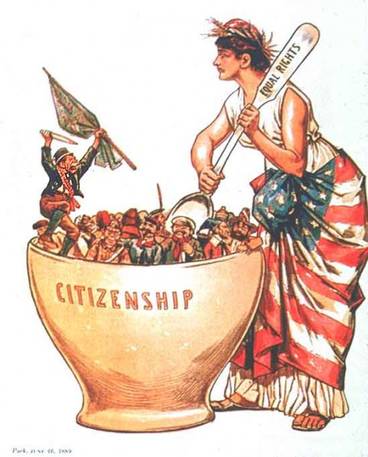Authoritative sources posit, 'culture' involves at least three components: “what people think” (i.e. ideology- e.g. religion, ethnicity, etc.), “what they do” (behavior), and the “material products they produce” (work). Further, culture is taught/learned; each generation teaches the next generation its ideology, behavior and work skills.
In the first half of the 20th century, there was a distinct observable Italian America culture. What Italian Americans ‘thought’, ‘did’ and ‘produced’ clearly defined their culture, and differentiated it from other cultures. Two great sociological works were written describing and analyzing that culture: “Urban Villagers” & “Street Corner Society”. Essentially, that culture was the immigrant’s Italian culture modified by the American urban/industrial environment.
In the second half of the 20th century that culture passed. The second generation (children of immigrants) did not learn/teach the culture of their parents. They learned/taught the suburban American “melting pot” culture. By the end of the 20th century, with the exception of nostalgic reminiscences, little if any observable measurable phenomena that could be called Italian American culture existed. There was little if anything being taught to children of Italian descent that constituted Italianita.
In social scientific terms, if one took a random sample of high school students descended from Italian immigrants, the ‘ideology’, ‘behavior’ and ‘work’ they are taught would not differentiate them from other Euro-Americans. Accordingly, the questions that can reasonably be asked: Who are Italian Americans? What are their distinguishing characteristics? Who and what are Italian American scholars and commentators talking about; beyond critiques of fiction and film about Little Italy days?
Today in America, there are manifestations of what may be called PhiloItalianoism; i.e. the love of Italian (not Italian American) culture such as food and tourist attractions (Greek, Roman and Renaissance). However, this PhiloItalianoism is essentially a pop-culture. Pop-culture is a mass culture, not identified with any specific group, and is essentially ephemeral (e.g. 1950’s TV westerns, rap music, etc).
Also, currently, there are traces of a Nuevo Italian American culture generated by post 1960’s Italian immigrants. However, it already shows signs of meltingpotism. Raised in heterogeneous suburbs and totally encompassing mass media; the children of these recent immigrants have ‘melted’ (as it were) even more quickly than the children of the original pre-WW I immigrants.
Finally, for the number crunchers, consider the pages of i-Italy itself. On Saturday (AM EDT) 4/19/08, 19 of 21 articles on the HOME page were either about Italian things or written in Italian (19/21*100 = 90%). One of three columns ‘above the (virtual) fold’ was devoted to AP Italian. In the MAGAZINE section, 20 of 23 articles were about Italian things or in the Italian language (20/23*100 = 87%).
In sum, to my mind, Italian American literati should concentrate on establishing that there is, in fact, such a thing as Italian American culture beyond reminiscence and nostalgia. If so, articulate its characteristics. Most importantly, how and by whom will it be taught to the next generation? Or, should we settle for PhiloItalianoism?
“Will you join me and other descendents of Sicily at Harry’s Bar in Venice, where we can celebrate out heritage dining on Carpaccio?”


